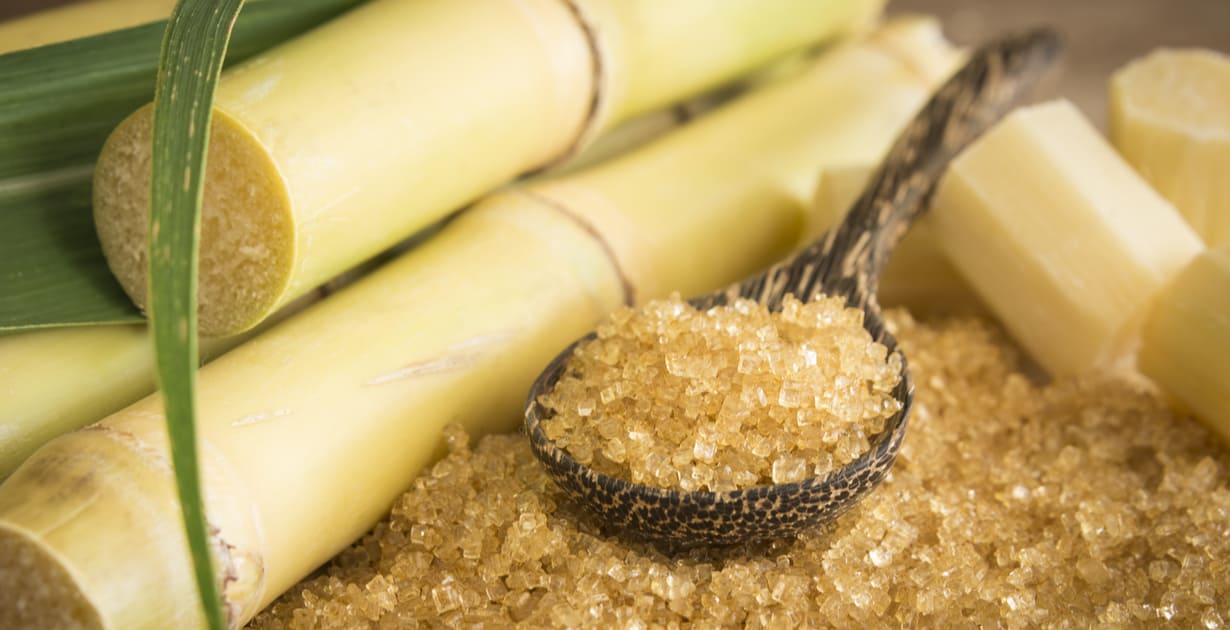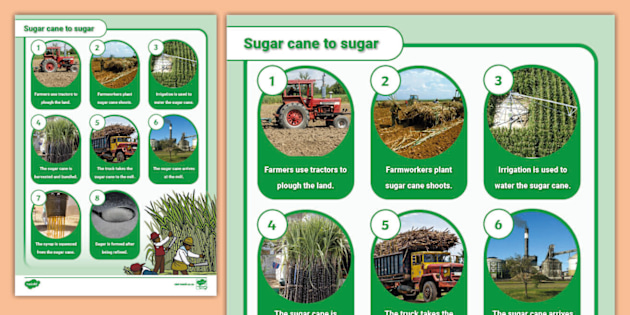How Developing Nations Answer the Question: What Are Sugar Canes Used For
All Concerning Sugar Canes: What Are Sugar Canes Used For and Their Duty in Global Agriculture?
Sugar walking sticks function as a cornerstone of global farming, mostly acknowledged for their role in sugar production. They also contribute to the creation of by-products like molasses and ethanol. These elements not just support various industries yet also effect economic stability in rural areas. The growing of sugar walking sticks faces substantial environmental difficulties. Comprehending their complex role motivates further exploration right into their agricultural techniques and sustainability efforts.
The Agricultural Refine of Sugar Walking Cane Cultivation
Although sugar walking stick cultivation might vary by region, the essential farming procedure continues to be constant. The initial step entails selecting high-yielding selections ideal for regional climates. Prep work of the dirt is vital, usually needing husbandry and the enhancement of plant foods to boost fertility. Planting normally takes place throughout the rainy period, with farmers making use of either whole stalks or cuttings to develop new crops.As the plants expand, they call for persistent treatment, consisting of weed control, pest administration, and irrigation, depending on the ecological problems. Farmers monitor the sugar cane's development cycle, which usually covers 10 to 24 months, prior to collecting. Collecting is labor-intensive, frequently performed manually or with specialized machinery, ensuring very little damage to the stalks. Complying with harvest, the walking cane is carried to processing facilities. This precise growing process not just supports local economies however additionally plays a considerable function in international agricultural practices, adding to food and power supplies.
Sugar Manufacturing: From Walking Stick to Crystal
The journey of sugar manufacturing begins the minute newly gathered sugar walking stick gets here at processing centers. The initial action involves cutting the walking stick and cleaning to prepare it for extraction. Making use of high-pressure rollers, the juice is extracted from the smashed walking cane, leading to a wonderful fluid referred to as sugarcane juice. This juice undertakes explanation, where impurities are gotten rid of via the enhancement of lime and heat.Next, the made clear juice is focused by steaming it down to develop a thick syrup. This syrup is then taken shape by cooling down, making it possible for sugar crystals to create. The taken shape sugar is separated from the continuing to be syrup, referred to as molasses, with centrifugation.Finally, the sugar crystals are washed and dried out, leading to the acquainted granulated sugar (What Are Sugar Canes Used For). This procedure transforms raw sugar walking cane into a product that is important to different culinary and industrial applications, highlighting the significance of sugar in international farming
Biofuels and Sugar Canes: A Lasting Future
As the world significantly looks for sustainable energy services, sugar walking sticks have become an appealing resource for biofuels. The biomass originated from sugar canes can be converted into ethanol, a renewable gas choice that considerably lowers greenhouse gas discharges contrasted to fossil fuels. This procedure not just gives a cleaner energy resource however likewise advertises power freedom for several countries.In addition, sugar walking stick growing sustains country economies by developing tasks in both farming and biofuel manufacturing sectors. Using sugar walking sticks for biofuel production additionally motivates farming diversification, which can improve dirt health and decrease reliance on solitary plants. The spin-offs of sugar walking cane processing can be made use of for power generation, furthermore contributing to a sustainable power cycle. As countries undertaking to fulfill renewable resource targets, sugar walking canes are poised to play a vital role fit an extra lasting future in the biofuel landscape.

The Role of Sugar Canes in Beverage Production
Sugar canes play a considerable duty in drink production, acting as a key component in rum and adding to the sweet taste of many sodas. In addition, their all-natural juices are used in different beverages, boosting taste and appeal. This adaptability underscores the importance of sugar canes in the global drink sector.
Sugar Cane in Rum
Rum manufacturing is elaborately linked to the growing of sugar cane, a vital plant that supplies the needed fermentable sugars needed for fermentation. This procedure starts with the extraction of juice from harvested sugar walking canes, which is after that either fermented directly or refined into molasses. Yeast is contributed to convert the sugars right into alcohol, leading to a varied variety of rum styles, from light to dark selections. The geographical area where the sugar cane is grown significantly affects the flavor profile of the rum, with variables such as soil type and environment having fun crucial roles. Nations like Barbados, Jamaica, and Cuba are renowned for their rum production, reflecting the social and historical significance of sugar walking cane within the global drink sector.
Soft Drinks Sweetener Source

All-natural Juice Manufacturing Uses
Along with its significant function in soft drink manufacturing, sugar walking stick is likewise critical in the natural juice industry. The juice drawn out from sugar walking cane, referred to as walking stick juice, is celebrated for its all-natural sweet taste and unique taste account. This juice is frequently consumed fresh in various areas, especially in tropical nations, where it is appreciated as a revitalizing drink. In addition, walking cane juice functions as a base active ingredient in a series of all-natural fruit juices and smoothies, improving both taste and dietary value. Its all-natural residential properties make it an attractive alternative to sweetening agents, interesting health-conscious customers. Generally, sugar cane's flexibility in juice manufacturing highlights its significance in contemporary beverage offerings worldwide.
Developments in Sugar Walking Stick Byproducts
Advancements in sugar walking cane results are leading the way for lasting services in various sectors. Biofuels obtained from sugar walking stick offer a different energy source, while improvements in lasting packaging are lowering dependence on typical products. These advancements highlight the flexibility and potential of sugar cane past its primary usage in beverage manufacturing.
Biofuels From Sugar Cane
Just how can the results of sugar walking stick add to sustainable power options? The conversion of sugar walking cane into biofuels provides an appealing avenue for renewable resource. By making use of the coarse deposit, known as bagasse, producers can produce bioethanol via fermentation procedures. This bioethanol can work as a sustainable option to fossil fuels, lowering greenhouse gas exhausts and dependence on non-renewable sources. In addition, molasses, one more byproduct, can be fermented to produce biofuels, taking full advantage of source efficiency. The power produced from sugar cane not only gives a cleaner fuel resource however additionally boosts the total economic stability of sugar production. By integrating biofuel production into their operations, sugar cane industries can play an essential function ahead of time sustainable energy options globally.
Lasting Packaging Solutions
Lasting product packaging services are increasingly being established from sugar cane by-products, showcasing the convenience of this agricultural staple. Developments such as eco-friendly plastics derived from bagasse, the coarse residue left after juice extraction, are acquiring grip. These materials provide an environment-friendly alternative to traditional plastics, reducing dependence on nonrenewable fuel sources and reducing carbon footprints. Furthermore, sugar cane-based product packaging is compostable, damaging down naturally without harming the environment. Firms are now discovering these alternatives to align with consumer need for sustainability. As recognition of plastic contamination expands, the adoption of sugar cane-derived packaging is expected to climb, placing sugar canes as a principal in the shift to greener product packaging options in numerous industries.
Economic Influence of Sugar Walking Stick Farming

Although sugar walking stick farming has deep origins in many economies, its economic influence prolongs much past agricultural manufacturing. This crop acts as a substantial resource of earnings for millions of farmers worldwide, specifically in developing countries where agriculture is a main resources. Sugar walking cane adds to neighborhood economies through task creation in handling, harvesting, and cultivation. The sector likewise stimulates development in associated markets such as transport, tools manufacturing, and food processing.Furthermore, sugar walking cane is a crucial player in global trade, influencing international markets and costs. Nations that create sugar walking stick usually count Get the facts on exports to boost their financial stability. The by-products of sugar cane, such as ethanol and molasses, branch out profits streams for farmers and add value to the farming sector. Overall, the financial implications of sugar walking stick farming are profound, influencing not only farmers yet also entire neighborhoods and nationwide economic situations.
Ecological Factors To Consider in Sugar Walking Stick Growing
While sugar cane farming plays a vital duty in several economies, it additionally elevates substantial ecological concerns that can not be forgotten. The considerable use plant foods and pesticides in sugar walking stick farming usually results in soil degradation and water pollution. Drainage from these chemicals can contaminate close-by water bodies, harming aquatic communities. In addition, the monoculture methods widespread in sugar walking cane farming decrease biodiversity, making communities more at risk to insects and diseases.Deforestation is one more essential issue, as land is usually cleared to make means for sugar plantations, causing environment loss for wild animals and enhanced carbon exhausts. The high water intake needed for sugar walking cane watering can strain regional water resources, especially in dry regions. As international demand for sugar remains to increase, dealing with these ecological difficulties ends up being crucial to guarantee sustainable methods in sugar walking cane cultivation.
Frequently Asked Questions
What Are the Nutritional Conveniences of Sugar Walking Stick?
The nutritional advantages of sugar walking cane mainly include its high carbohydrate web content, supplying power. In addition, it includes vitamins, minerals, and anti-oxidants that might sustain overall health, though small amounts is important due to its sugar material.
How Does Sugar Walking Stick Affect Citizen Ecosystems?
Sugar cane farming can substantially influence neighborhood environments by modifying land usage, influencing biodiversity, and needing substantial water sources. Furthermore, it may result in dirt degradation and chemical runoff, interfering with surrounding habitats and wildlife populaces.
What Is the History of Sugar Cane Farming?

Are There Alternatives to Sugar Walking Cane for Sugar Production?
Alternatives to sugar cane for sugar production include sugar beetroots, corn, and various exotic plants like sorghum and agave (What Are Sugar Canes Used For). These crops supply varied resources of sweet taste, each with distinct growing requirements and environmental influences
Exactly How Do Weather Condition Patterns Influence Sugar Walking Cane Returns?
Weather condition have a peek at this site patterns significantly affect sugar walking stick yields via temperature variations, rainfall quantities, and seasonal cycles. Drought or excessive rainfall can impede growth, while perfect problems boost photosynthesis, eventually affecting the amount and quality of the harvest. The journey of sugar manufacturing begins the moment newly collected sugar cane arrives at processing facilities. The taken shape sugar is divided from the staying syrup, recognized as molasses, with centrifugation.Finally, the sugar crystals are cleaned and dried out, resulting in the familiar granulated sugar. Rum production is elaborately connected to the cultivation of sugar walking cane, an important crop that offers the essential fermentable sugars required for fermentation. Furthermore, the monoculture practices prevalent in sugar cane farming decrease biodiversity, making ecosystems a lot more at risk to insects and diseases.Deforestation is another essential concern, as land is typically removed to make means for sugar vineyards, leading to habitat loss advice for wild animals and increased carbon exhausts. Alternatives to sugar cane for sugar production include sugar beets, corn, and numerous exotic plants like sorghum and agave.